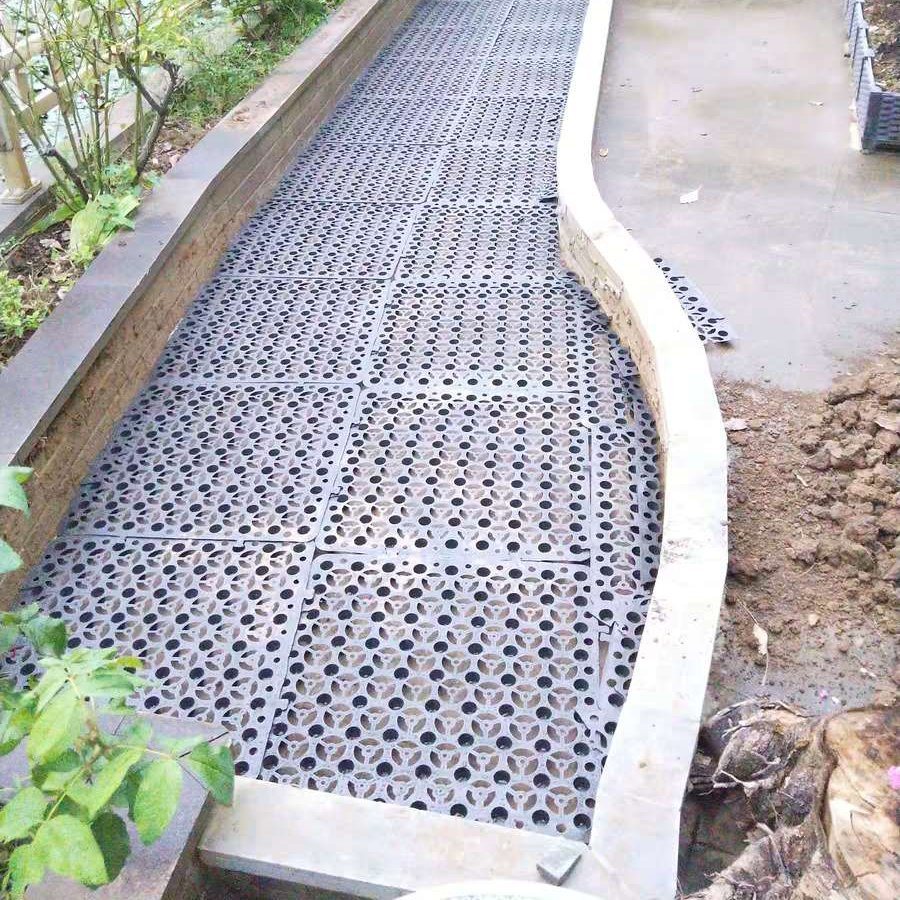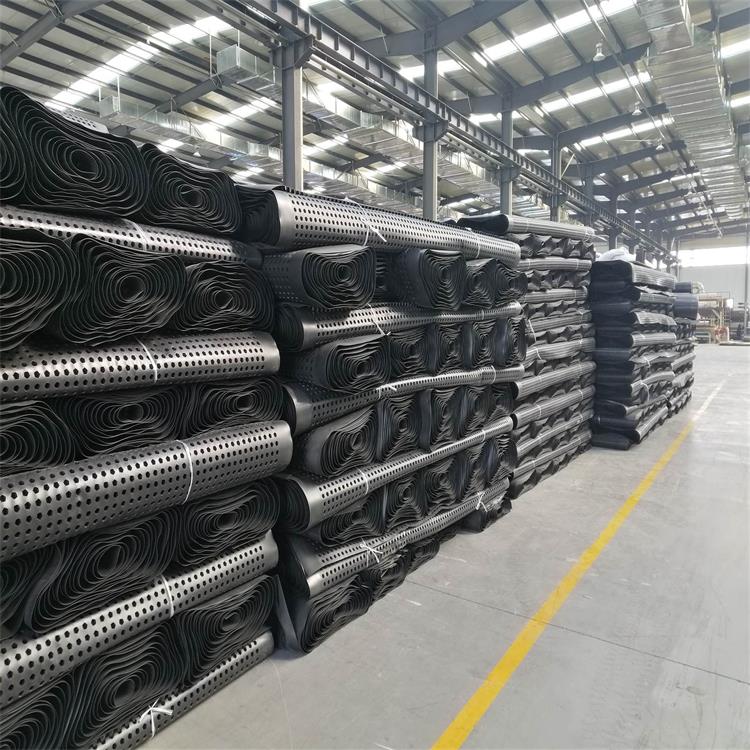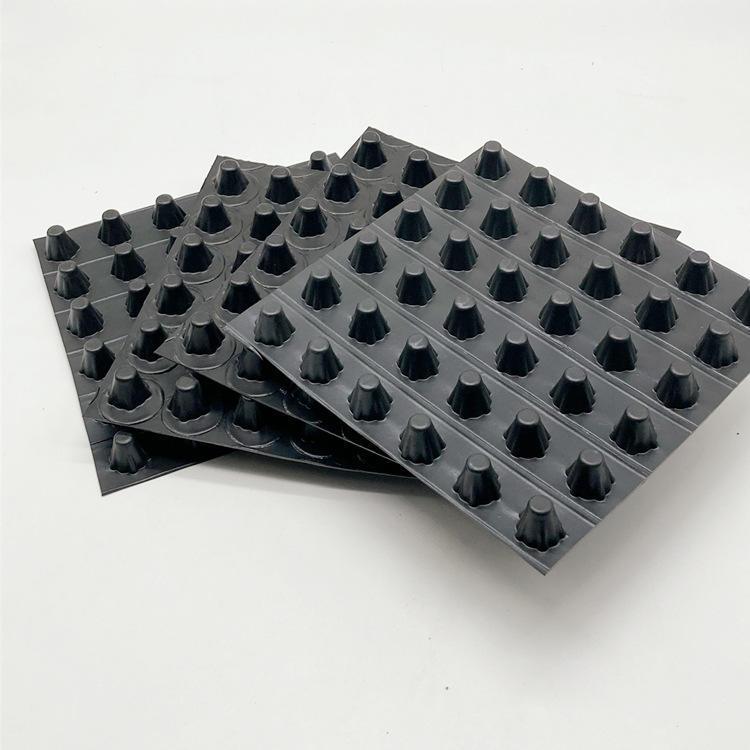Garden Drainage Board
1.Excellent water conduction and drainage performance.
2.Resistance to plant root puncture.
3.Good acid and alkaline resistance.
4.Sound insulation and ventilation moisture-proof function.
If your garden looks perfect on the surface but suffers from soggy roots, pooling water, or poor plant growth, it might be time to look deeper—literally. A Garden Drainage Board could be the missing piece that transforms your outdoor space from wet and weary to vibrant and thriving.
?️ What Is a Garden Drainage Board?
A Garden Drainage Board is a high-density plastic sheet engineered with a dimpled or channeled structure designed to divert excess water away from plant roots, soil layers, and foundations. Installed beneath soil, turf, or pavers, it creates a hidden drainage layer that allows water to pass through efficiently while retaining soil stability.
Whether you're installing a rooftop garden, a raised bed, or a landscaping project on sloped terrain, the garden drainage board acts like an underground highway system—redirecting water without disrupting your design.
✅ Key Benefits of Using a Garden Drainage Board
1. Prevents Waterlogging
Excess water can lead to root rot and fungal growth. A garden drainage board ensures consistent moisture regulation without oversaturation.
2. Extends Plant Health & Growth
With well-drained soil, roots develop deeper and stronger, leading to healthier and more resilient plants.
3. Protects Foundations & Hardscaping
When installed near retaining walls or patios, a garden drainage board keeps hydrostatic pressure and water damage at bay.
4. Eco-Friendly & Recyclable
Most garden drainage boards are made from recycled HDPE or polypropylene, reducing environmental impact.
5. Easy Installation
Flexible, lightweight, and compatible with various garden types, it’s a DIY-friendly material that saves long-term maintenance costs.
? Ideal Applications for a Garden Drainage Board
? Rooftop Gardens – Light enough for rooftop load limits, yet strong enough to support green roof systems.
? Raised Garden Beds – Ensures proper root zone drainage without soil erosion.
? Retaining Walls – Relieves back pressure and prevents structural moisture buildup.
? Greenhouses & Nurseries – Promotes healthy drainage in controlled growing environments.
? Landscaping Slopes – Prevents soil displacement while guiding runoff away from plant roots.
?️ How to Install a Garden Drainage Board (Step-by-Step)
Step 1: Prepare the Surface
Ensure the area is leveled and free from debris. A slight slope helps guide water to a designated outlet.
Step 2: Lay Filter Fabric
Optional but recommended—nonwoven geotextile filter fabric enhances filtration and keeps soil from clogging the board’s channels.
Step 3: Position the Garden Drainage Board
Place the board dimples facing outward to create an air and water gap between the soil and underlying layer.
Step 4: Add a Drainage Pipe (if needed)
For areas with heavy rainfall, insert a perforated pipe along the edge to collect and discharge water more efficiently.
Step 5: Backfill with Soil or Growing Medium
Cover the board with your chosen soil or planting material. Compact gently to avoid crushing the board’s structure.
?? Real User Reviews
⭐⭐⭐⭐⭐
“After years of battling poor drainage in my backyard planter, I finally installed a garden drainage board—and wow! No more soggy roots or moldy mulch. My herbs are thriving!”
— Erin S., Seattle, WA
⭐⭐⭐⭐
“We used drainage boards under our rooftop garden beds. Installation was a breeze, and they’ve helped manage water runoff incredibly well during rainy seasons.”
— Carlos M., Brooklyn, NY
⭐⭐⭐⭐⭐
“As a landscape contractor, I now recommend garden drainage boards to every client. It adds longevity to hardscapes and saves headaches down the line.”
— Jake T., Austin, TX
? Common Questions About Garden Drainage Boards
Q1: Do garden drainage boards need regular maintenance?
A: Not really. Once installed correctly, the board requires little to no maintenance, aside from periodic visual inspection if accessible.
Q2: Can I use it with clay-heavy soil?
A: Absolutely. In fact, garden drainage boards are most beneficial in compact or clay-rich soils that retain moisture.
Q3: How long do they last?
A: Most high-quality HDPE drainage boards have a lifespan of 20–50 years, depending on environmental exposure and load stress.
Q4: Are they compatible with vertical gardens?
A: Yes! Their moisture control ability makes them ideal for green walls, living facades, and other vertical planting systems.
? Let’s Hear From You!
Have you installed a garden drainage board in your home or project? What changes did you notice in plant health or water control?
Drop your experience in the comments below ⬇️—your insights could help fellow gardeners make better decisions!
? Final Thoughts
A garden drainage board might not be the first thing you consider when designing your landscape—but it should be. Beneath the surface, it plays a crucial role in keeping your garden healthy, dry, and sustainable. With easy installation, minimal maintenance, and long-lasting performance, this small upgrade can yield big results for years to come.
If you’re planning a new garden, green roof, or even a simple backyard planter box—don’t skip the drainage. Choose a garden drainage board that works as hard as you do to make your outdoor space flourish.











